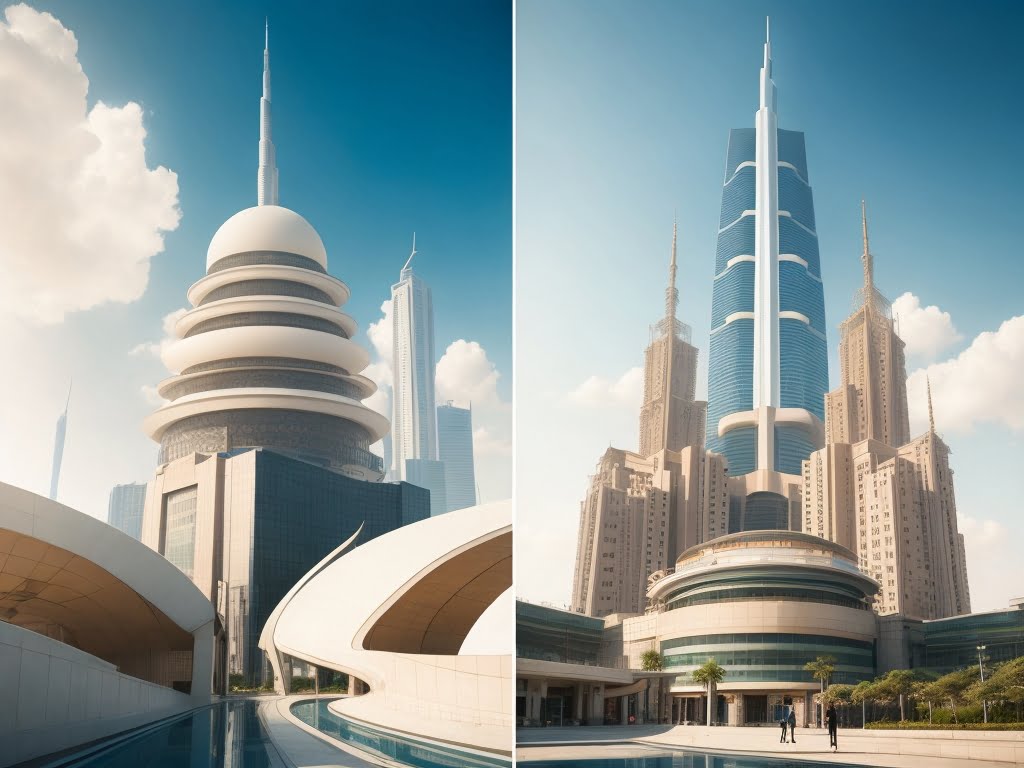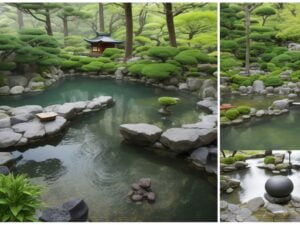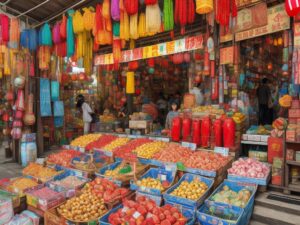Immerse yourself in the captivating blend of tradition and innovation as we explore the architectural marvels of Tokyo and Dubai. These two vibrant cities effortlessly blend age-old traditions with state-of-the-art technology, creating a harmonious coexistence that is truly awe-inspiring. From Tokyo’s ancient temples and historic neighborhoods, contrasting with its futuristic skyscrapers and high-tech infrastructure, to Dubai’s traditional souks and majestic mosques, set against its record-breaking towers and modern urban design, these cities offer a captivating glimpse into the seamless integration of the past and the present. Get ready to embark on a remarkable journey where tradition and innovation converge in an architectural marvel that is both visually stunning and deeply rich in cultural heritage.
Table of Contents
ToggleArchitectural Marvels of Tokyo and Dubai
Historical Significance of Tokyo and Dubai
Tokyo: A Blend of Past and Present
Tokyo, the capital city of Japan, is a remarkable blend of ancient traditions and modern technologies that coexist harmoniously. With a history dating back centuries, Tokyo has served as the center of political, economic, and cultural activities in Japan. The city’s rich heritage can be witnessed in its architectural marvels, reflecting the traditional Japanese style of design and construction. At the same time, Tokyo embraces modernity with its innovative skyscrapers and futuristic cityscape.
Dubai: From Traditional to Modern
Dubai, located in the United Arab Emirates, is a captivating destination that has rapidly transformed from a humble fishing village to a global metropolis. Despite its rapid growth and urban development, Dubai has managed to preserve its cultural heritage by blending traditional and modern architectural elements throughout the city. From traditional Arabian architecture featuring intricate designs and patterns to record-breaking skyscrapers that push the boundaries of engineering, Dubai showcases a perfect juxtaposition of tradition and modernity.
Tokyo’s Architectural Marvels
Traditional Japanese Architecture: Preserving Cultural Heritage
Tokyo boasts a wide array of traditional Japanese architectural marvels that have withstood the test of time. These structures are not only visually captivating but also reflect the cultural heritage of Japan. From ancient temples such as Senso-ji and Meiji Shrine to historic castles like the Imperial Palace, Tokyo allows visitors to step back in time and experience the beauty and serenity of traditional Japanese architecture. The emphasis on natural materials, harmonious proportions, and meticulous craftsmanship in these structures is a testament to the importance placed on preserving cultural heritage.
Innovative Skyscrapers: A Modern Skyline
In contrast to its traditional architectural wonders, Tokyo also showcases a breathtaking modern skyline with its innovative skyscrapers. The city’s cutting-edge architecture combines sleek designs, sustainable features, and state-of-the-art technology. Landmarks like the Tokyo Skytree and Tokyo Tower offer panoramic views of the city, while buildings such as the Mori Tower and the Roppongi Hills stand as symbols of modernity and advancement. These skyscrapers not only redefine the city’s skyline but also demonstrate Tokyo’s commitment to embracing the future while honoring its rich past.
Dubai’s Architectural Marvels
Traditional Arabian Architecture: A Reflection of Culture
Dubai’s architectural wonders pay homage to the city’s Arabian roots and Islamic heritage. The traditional Arabian architecture, characterized by intricate geometric patterns, vibrant colors, and detailed craftsmanship, adds a touch of elegance and charm to the city’s landscape. The Al Fahidi Historic District with its wind towers and traditional courtyard houses, known as “Barjeel,” provides a glimpse into Dubai’s past and the lifestyle of its residents before the era of modernization. The preservation of such structures showcases the city’s commitment to honoring cultural traditions.
Record-Breaking Structures: Pushing the Boundaries
Dubai’s architectural marvels are not limited to its traditional buildings. The city is renowned for its record-breaking structures that push the boundaries of engineering and design. The Burj Khalifa, the tallest skyscraper in the world, stands as a testament to Dubai’s ambition and vision. Its awe-inspiring height and sleek design have redefined the possibilities of modern architecture. Alongside the Burj Khalifa, the Burj Al Arab, shaped like a sail and set on its own island, has become an iconic symbol of luxury and opulence. These groundbreaking structures have put Dubai on the global map of architectural innovation, captivating visitors from around the world.
Cultural Influences on Architectural Styles
Tokyo: Zen and Minimalism
Tokyo’s architectural styles are greatly influenced by traditional Japanese principles of Zen and minimalism. Zen philosophy seeks simplicity and harmony with nature, and these ideals are reflected in the city’s design choices. The use of natural materials such as wood, stone, and bamboo, combined with neutral color palettes and clean lines, creates a sense of tranquility and balance in Tokyo’s architecture. The incorporation of traditional Japanese gardens, like the famous Rikugien Garden and Shinjuku Gyoen, further strengthens the connection between architecture and nature, promoting a peaceful and serene environment.
Dubai: Islamic and Contemporary Fusion
Dubai’s architectural styles draw inspiration from Islamic design principles while incorporating contemporary elements. Islamic architecture is characterized by intricate geometric patterns, calligraphy, and the extensive use of arches and domes. Dubai’s modern buildings often incorporate these traditional Islamic motifs, paying tribute to the city’s religious and cultural heritage. The fusion of traditional and contemporary elements creates a unique architectural language that is distinctly Dubai and captures the essence of a cosmopolitan Islamic city.
Innovative Technologies in Architecture
Tokyo: Sustainable and Smart Solutions
Tokyo’s commitment to sustainable living and smart technologies is reflected in its architectural innovations. The city, known for its limited land resources, has embraced vertical living through the creation of high-rise buildings that optimize space efficiency. These structures incorporate advanced technologies such as energy-efficient systems, smart lighting, and green roofs to promote sustainability. Additionally, Tokyo’s advancements in earthquake-resistant designs ensure the safety and resilience of its buildings, further solidifying its reputation as a leader in innovative architectural solutions.
Dubai: Smart Cities and Futuristic Concepts
Dubai has become synonymous with cutting-edge technology and futuristic concepts in architecture. The city’s commitment to becoming a smart city is evident in its initiatives, such as the Dubai Future Foundation and the Dubai Internet City. The integration of smart technologies in Dubai’s buildings, infrastructure, and transportation systems aims to enhance the quality of life for its residents and visitors. From self-driving cars to solar-powered buildings, Dubai is at the forefront of embracing the latest advancements in architecture and technology, shaping the cities of the future.
Preserving Heritage in Modern Cities
Tokyo: Cultural Preservation Efforts
Despite its rapid urban development, Tokyo has made significant efforts to preserve its cultural heritage. Historic buildings and neighborhoods have been carefully restored and maintained, allowing visitors to experience the ambiance of old Tokyo. Government agencies, alongside private organizations, collaborate to safeguard traditional crafts and art forms, ensuring their continuity for future generations. Furthermore, Tokyo’s commitment to preserving its intangible cultural heritage is evident through various festivals, performances, and museums, which celebrate Japan’s rich traditions and history.
Dubai: Balancing Tradition and Progress
Dubai faces the unique challenge of preserving its heritage while embracing progress. The city’s government and urban planners strive to strike a balance between preserving traditional architecture and accommodating modern development. Through the establishment of heritage areas and preservation zones, Dubai ensures the protection of historic sites and the preservation of its cultural essence. Efforts are made to seamlessly integrate new structures with the old, creating a harmonious urban landscape that pays homage to the past while paving the way for the future.
Sustainable Design and Green Initiatives
Tokyo: Incorporating Nature in Urban Spaces
Tokyo’s commitment to creating sustainable and livable urban environments is evident in its incorporation of nature. The city recognizes the importance of green spaces in mitigating the heat island effect and providing a connection to nature. Parks, gardens, and rooftop greenery are integrated into the urban fabric, offering residents and visitors a respite from the hustle and bustle of city life. Furthermore, Tokyo’s emphasis on energy-efficient buildings, waste management systems, and eco-friendly transportation showcases its dedication to creating a greener and more sustainable future.
Dubai: Eco-Friendly Architecture
Dubai’s futuristic architecture is not only visually striking but also incorporates eco-friendly design principles. The city is investing in sustainable infrastructure and renewable energy sources to reduce its environmental footprint. Dubai’s commitment to sustainable architecture is evident in initiatives such as the Dubai Sustainable City, which incorporates green building practices, solar energy, and waste management systems. The city’s commitment to eco-friendly architecture aligns with its vision of becoming a global leader in sustainability and setting an example for future urban development.
Iconic Landmarks and Tourist Attractions
Tokyo: The Imperial Palace and Tokyo Tower
Tokyo’s architectural landmarks captivate visitors with their historical significance and architectural grandeur. The Imperial Palace, located in the heart of Tokyo, represents the imperial family and stands as a symbol of Japan’s rich history. Its traditional architectural style, surrounded by picturesque gardens, transports visitors to a bygone era. Another iconic landmark is the Tokyo Tower, inspired by the Eiffel Tower in Paris. Offering breathtaking views of the city, this structure showcases Tokyo’s ability to blend modern design with its traditional sensibilities.
Dubai: Burj Khalifa and Burj Al Arab
Dubai is synonymous with iconic landmarks that have become global symbols of the city’s ambition and opulence. The Burj Khalifa, the tallest skyscraper in the world, dominates the skyline and offers unparalleled views from its observation decks. Its sleek and futuristic design has made it an architectural marvel admired worldwide. Another landmark that exemplifies Dubai’s architectural brilliance is the Burj Al Arab, a luxurious hotel known for its sail-like structure set on its own island. These landmarks represent Dubai’s aspiration for greatness and its commitment to pushing the boundaries of architectural innovation.
Architectural Innovations for Future Cities
Tokyo: Vertical Farms and Skybridges
Tokyo is at the forefront of architectural innovations that address the challenges faced by future cities. Vertical farms, utilizing advanced hydroponic and aeroponic systems, allow for the cultivation of crops within urban areas, reducing the need for long-distance transportation and minimizing the carbon footprint. Additionally, skybridges, connecting buildings at various heights, offer alternative paths and recreational spaces while optimizing land use. These innovative solutions demonstrate Tokyo’s commitment to sustainable urban planning and its vision for a greener future.
Dubai: Underwater Resorts and Artificial Islands
Dubai is renowned for its ambitious architectural visions that push the boundaries of what is possible. Futuristic concepts such as underwater resorts and artificial islands are being realized in the city. The World Islands, a collection of man-made islands shaped like a world map, and the Palm Jumeirah, an artificial island in the shape of a palm tree, showcase Dubai’s ambition and engineering prowess. Furthermore, plans for underwater hotels and resorts are underway, offering a unique and immersive experience that combines luxury and innovation. These architectural innovations embody Dubai’s determination to redefine the possibilities of urban development.
Conclusion
Tokyo and Dubai exemplify the harmonious blend of tradition and innovation in their architectural marvels. While Tokyo showcases the beauty of traditional Japanese architecture alongside innovative skyscrapers, Dubai seamlessly combines traditional Arabian elements with record-breaking structures. Both cities draw on their cultural heritage to influence their architectural styles, with Tokyo emphasizing Zen and minimalism, and Dubai fusing Islamic motifs with contemporary designs. The adoption of innovative technologies and sustainable practices is prevalent in both cities, with Tokyo prioritizing smart solutions and sustainability, and Dubai striving to become a smart city while reducing its environmental impact. These cities are dedicated to preserving their heritage amidst modernization, with Tokyo focusing on cultural preservation efforts and Dubai successfully balancing tradition with progress. Tokyo and Dubai’s architectural innovations for future cities offer a glimpse into their visions of a sustainable and transformative future. As Tokyo embraces vertical farms and skybridges, Dubai embarks on creating underwater resorts and artificial islands. Through their iconic landmarks and tourist attractions, these cities serve as global beacons of architectural brilliance. Tokyo’s Imperial Palace and Tokyo Tower, along with Dubai’s Burj Khalifa and Burj Al Arab, symbolize their respective cities’ cultural significance and architectural grandeur. In conclusion, Tokyo and Dubai are not only architectural marvels but also testimonies to the extraordinary fusion of tradition, innovation, and sustainability in contemporary city life.





